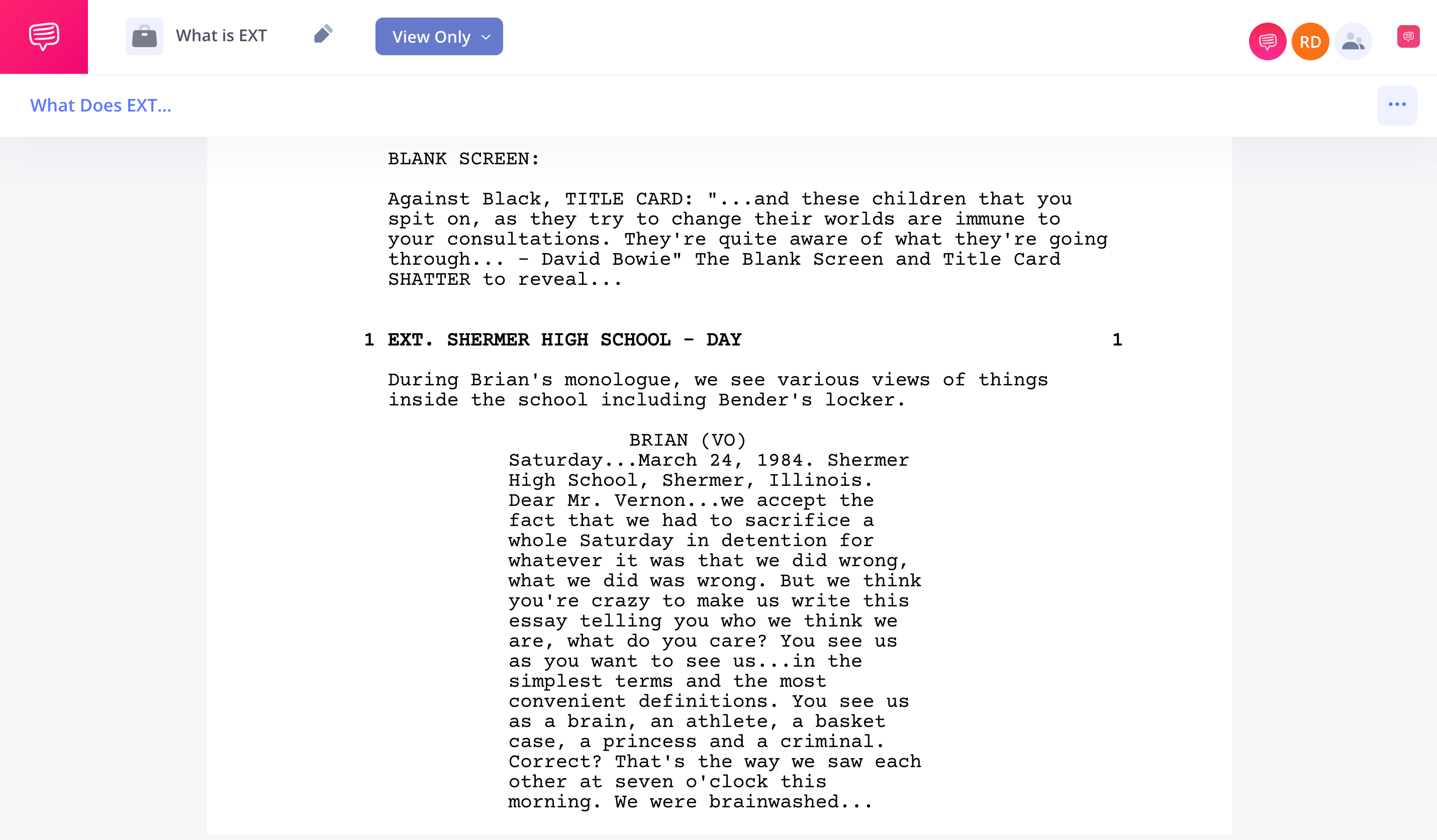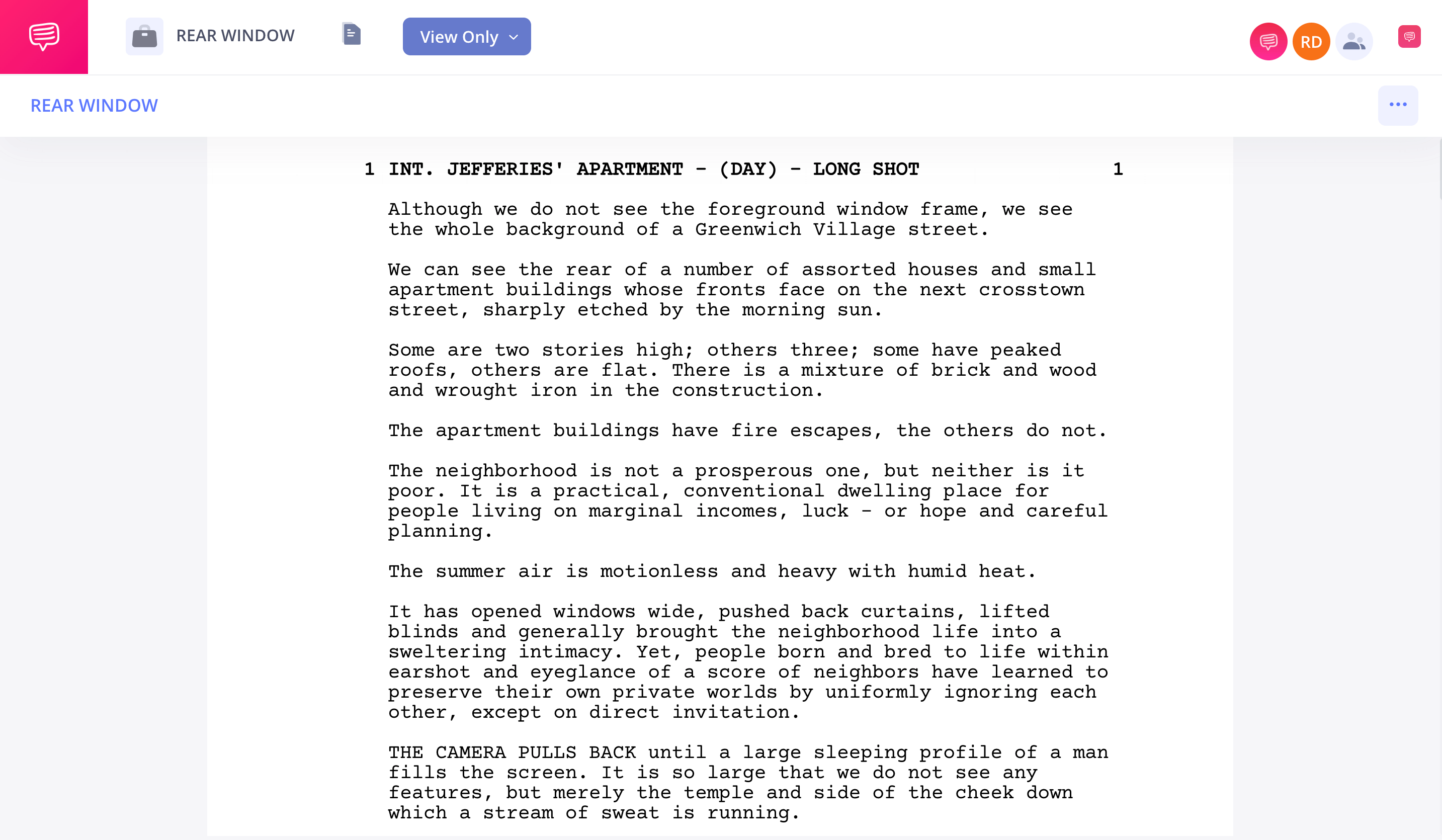EXT: three little letters that communicate a lot. But what does EXT mean in a script? We’re going to answer that question by defining the term and by breaking down some examples from real-world screenplays. By the end, you’ll know what EXT means and how to correctly utilize it in your own writing.
What Does EXT Mean On a Script?
First, let’s define sluglines
Before you write your dialogue, you need to first establish your setting. In scripts, you do this in sluglines. What is a slugline? A slugline is a part of a script that indicates where and when a scene takes place.
Here’s an example from the The Godfather screenplay:
EXT. DAY: MALL TABLES (SUMMER 1945)
This slugline tells us that the scene takes place outside a mall/by some tables during the day in Summer 1945. You may see EXT at the start of the slugline; let’s formally define what it means before looking at a few more examples.
EXT DEFINITION
What does EXT mean in a script?
EXT means exterior, which communicates to production that the camera should be placed outside for the shot/scene.
What Does EXT Mean in a Screenplay?
How to use EXT in a script
You should always write EXT in the slugline for any scene that takes place outside.
For example: the opening scene from The Breakfast Club script establishes the setting from the exterior.
EXT. SHERMER HIGH SCHOOL - DAY
However, it quickly clarifies that the establishing shot of the exterior should be intercut with shots of the interior.
What Does EXT Mean in a Script? • EXT Meaning Script, Slugline Example from The Breakfast Club
The slugline, action, and monologue effectively serve to build the setting of “Shermer High School” internally and externally. This gives us a greater impression of its size and scope.
So, you should always write EXT for scenes that take place outside. But what about scenes that take place inside that are seen through a vantage from outside? Good question.
You should write EXT if you envision the camera perspective outside. Say you’re looking into an apartment from a courtyard: the action may take place in the interior, but the point of view is from the exterior.
We imported the Rear Window script into StudioBinder’s screenwriting software to take a closer look at some scenes that expertly communicate EXT and INT.
As you’re reading, think about how the slugline communicates the perspective of the camera to the reader.
What Does EXT Mean in a Script? • INT vs EXT Script Example: Rear Window
In Rear Window, screenwriter John Michael Hayes builds a dense setting that plays with interiors and exteriors. Oftentimes, we see into interiors from the exterior (and vice versa). This disorients our vantage of the story’s plot, ultimately putting us in a detective-esque position alongside the protagonist.
But most simply: EXT means exterior.
When should you use EXT? You should use EXT if your scene takes place outside and your camera is outside; or (on the rare occasion your scene takes place inside but your camera is outside), you should still write EXT in the slugline.
When should you use INT? You should use INT if your scene takes place inside and your camera is inside; or (on the rare occasion your scene takes place outside but your camera is inside), you should still write INT in the slugline.
Up Next
Ultimate Guide to Screenwriting Terms
INT and EXT are just two screenwriting terms, there are dozens more to learn and master! Our next article breaks down a huge glossary of screenwriting terms, with examples from scripts like Inception, Lady Bird, and more. By the end, you’ll know all the basic screenwriting terminology, and how to implement them in your own scripts.


